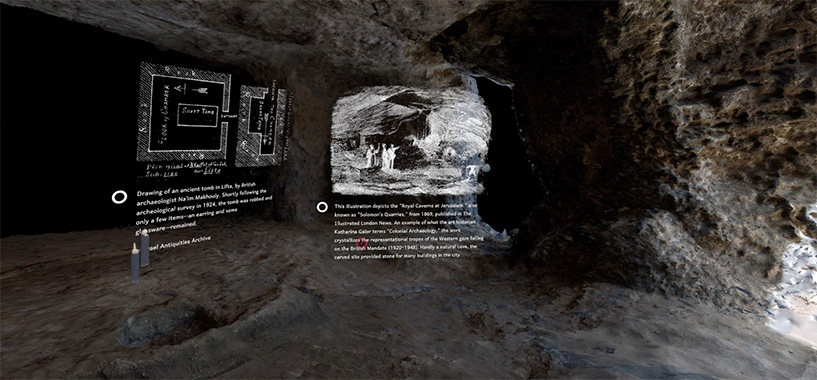
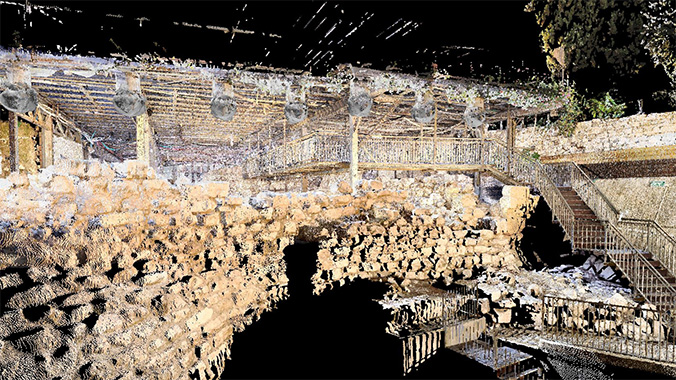
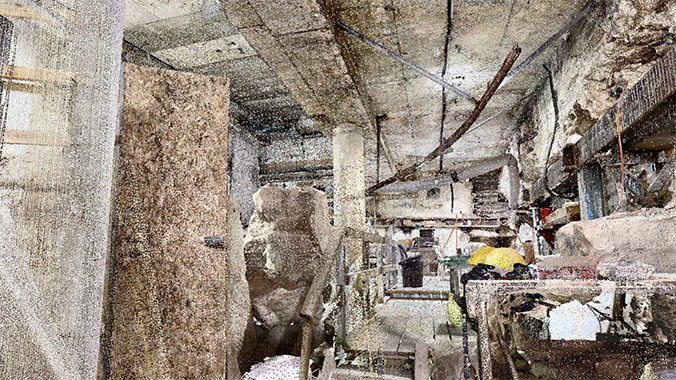
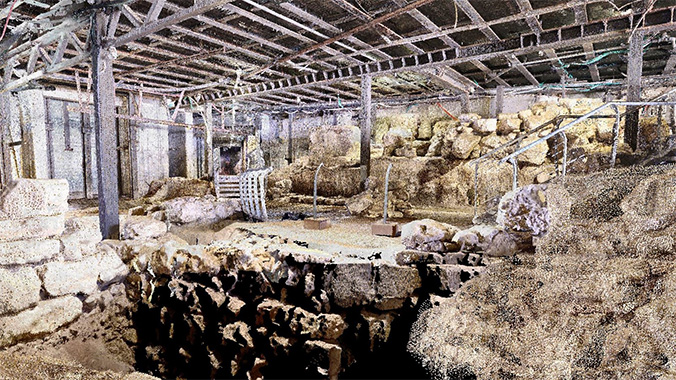
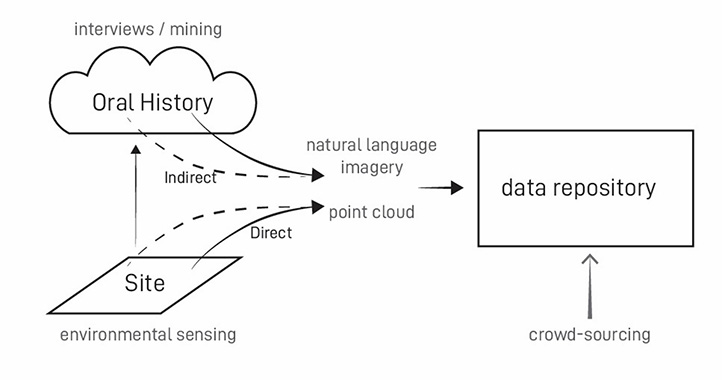
In 2013 ELAD, the NGO that operates the City of David National Park in Jerusalem’s Holy Basin, opened the Herodian drainage tunnel that leads all the way from the Pool of Siloam, underneath the Ottoman Wall, and onto the archeological park at the foot of the Temple Mount. Recently the American ambassador inaugurated the ancient street above this tunnel and below the houses of Wadi Hilweh, following the same route. Archeologist Ronny Reich dug the first tunnel, gradually transitioning the commissioned rescue dig—a statutory measure protecting ancient remains from developers’ teeth, into the so-called “development excavation” that allow for horizontal rather than layered excavation that would enhance tourism and pilgrimage. These ongoing excavations carve an underground semi-urban network of spaces and passages that gradually transform David’s City into an urban landmark. This transformation suggests a transition from archaeology—a science and method studying material strata of the past, to architecture – a body of knowledge and praxis articulating experiential public spaces and animating materials through their exposure and narration in the form of a new tourist site. This site’s underground boulevard is simultaneously a powerful economic and political engine drawing tourists to a Jewish Jerusalem that delegitimates the Palestinian population above.
This paper will examine the tunnels’ excavation project underneath Silwan and their modes of fabricated endurance. The first mode is an “occupancy endurance.” It is facilitated by “development excavations” as a creative process approximating architectural design more than scientific archaeology. “Occupancy endurance” draws on the sociopolitical conditions of occupation, as well as on the creative practice of architectural design. The second is a mode of exploration we call “virtual endurance.” It is a form of activism through digital excavation that uses sensor technologies and real-time rendering to produce a digital reconstruction of the underground spaces and their sensory experience. This method entails a non-intrusive spatial reconstruction, critically interpreting the same archaeological material, and allowing various open-ended interpretations by augmenting digital materials.
Our project translates material into space and thus negotiates between the two modes of endurances. In one case, we study how excavations produce, or rather fabricate underground urban space, and in the other we produce the same site as a virtual space, thus refraining from physical occupation and accessing various interpretations instead. In the first, archeology works like architecture, while in the second virtual space turns into critical architectural histography.